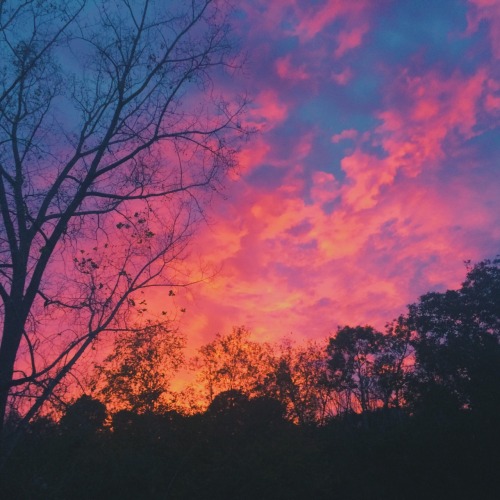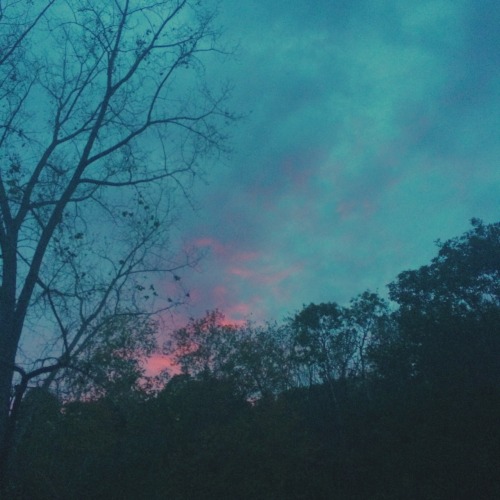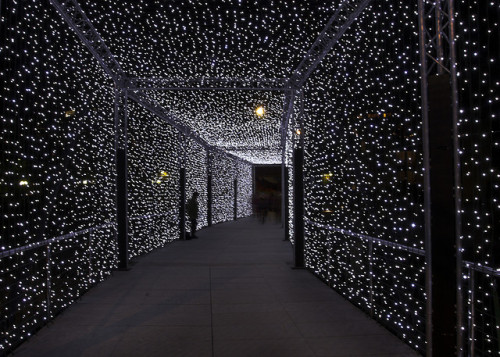NASA: 2016 Look Ahead
NASA: 2016 Look Ahead

The work we do, and will continue in 2016, helps the United States maintain its world leadership in space exploration and scientific discovery. Here’s an overview of what we have planned for the coming year:
Our Journey to Mars

We’re developing the capabilities needed to send humans to an asteroid by 2025 and Mars in the 2030s. Mars is a rich destination for scientific discovery and robotic and human exploration as we expand our presence into the solar system. Its formation and evolution are comparable to Earth, helping us learn more about our own planet’s history and future.
Work and Research on the International Space Station

The International Space Station is a unique place – a convergence of science, technology and human innovation that demonstrates new technologies and makes research breakthroughs not possible on Earth. In 2016, we will continue our groundbreaking research on the orbiting laboratory.
Returning Human Spaceflight Launches to American Soil

Our Commercial Crew Program is working with the American aerospace industry as companies develop and operate a new generation of spacecraft and launch systems capable of carrying crews to low-Earth orbit and the International Space Station. Commercial transportation to and from the station will provide expanded utility, additional research time and broader opportunities of discovery on the orbiting laboratory.
Studying Our Earth Right Now

We use the vantage point of space to increase our understanding of our home planet, improve lives and safeguard our future. In 2016, we will continue to monitor Earth’s vital signs from land, air and space with a fleet of satellites and ambitious airborne and ground-based observation campaigns.
Fostering Groundbreaking Technology Development

Sustained investments in NASA technology advances our space exploration, science and aeronautics capabilities. Our technology development also supports the nation’s innovation economy by creating solutions that generate tangible benefits for life on earth. In 2016, we will continue to invest in the future of innovation.
Breakthroughs in Aeronautics

Thanks to our advancements in aeronautics, today’s aviation industry is better equipped than ever to safely and efficiently transport all those passengers to their destinations. In fact, every U.S. aircraft flying today and every U.S. air traffic control tower uses NASA-developed technology in some way. In 2016, we will continue making these breakthroughs in aeronautics.
Discoveries in Our Solar System and Beyond

This year we will continue exploring our solar system and beyond to unravel the mysteries of our universe. We are looking to answer key questions about our home planet, neighboring planets in our solar system and more!
Make sure to follow us on Tumblr for your regular dose of space: http://nasa.tumblr.com
More Posts from Inter-stellxr-blog and Others




NASA just released thousands of high-res Apollo mission photos
The space research agency’s Project Apollo Archive made a massive update to its Flickr account Sunday, adding a trove of more than 8,000 photos taken during Moon missions from 1969 to 1972.
spoopy

Celebrate the Saturn V’s Birthday by Watching the Largest Rocket in History Fly
The Saturn V rocket is objectively the most badass vehicle ever made. Screw your SR-71 Blackbirds. To hell with your Maglev trains. Shove your hoverboards up your butt. The Saturn V, flagship of the Apollo Moon landings, has them all beat for style, performance, and historical impact, hands-down, end of story.
No doubt the launches were even more incredible to witness in person, but this visual mosaic of all 13 blast-offs is bound to give you a contact high nonetheless. Watch on, and pay your respects to this masterpiece of engineering, which repeatedly burned up in the atmosphere so that we didn’t have to.
You heard it right: That’s Walter Cronkite, arguably the most unflappable newsman in history, losing his shit over the raw power of the Saturn V.
“My God, our building’s shaking here,” he says with palpable delight. “Oh it’s terrific, the building’s shaking! This big blast window is shaking! We’re holding it with our hands! Look at that rocket go into the clouds at 3,000 feet! Oh, the roar is terrific!”
We feel you, Walter. A lot of rockets have come and gone since the Saturn V was retired in 1973, but none have ever exceeded the sheer explosive wonder of this Apollo Age champ. It remains the largest and most powerful rocket of all time, standing 36 stories high and weighing about 6.2 million pounds when fully fueled. For comparison, SpaceX’s Falcon Heavy, slated for its first flight next year, will stand 22 stories high.

“It has more capability than any vehicle in history,” Elon Musk said of the Falcon Heavy, “apart from the Saturn V.”
Alas, the Saturn V rockets were also expendable launch vehicles, meaning that only the tiny command modules carrying the returning Apollo astronauts ever made it back to Earth. But though we don’t have many physical remains of the beasts that gave us our first boosts to another world, we have plenty of nostalgically sepia-toned footage recording their pyrotechnic departures from our planet.
Mad props, Saturn V. You’re the real MVP.
Source: @vicemag [x]

Construction Starts for Camera That Will Capture More Galaxies Than There Are People on Earth
Beginning in 2022, the most powerful digital camera ever built will start taking pictures of the southern sky. Over the course of a 10-year mission atop a mountain in Chile, the 3.2 gigapixel instrument is expected to accomplish a feat that might be hard to wrap your mind around. It will record tens of billions of galaxies floating in space–the first time a telescope will have ever identified more of the massive celestial objects than there are people on Earth.
Late last month, the U.S. Department of Energy gave its blessing for researchers to start building the camera that will sit at the heart of the Large Synoptic Survey Telescope (LSST). The gif above shows the three-ton, small-car-sized camera on the left. Illustrated is the system that slides filters down in front of the 3.2 gigapixel CCD, which senses light and is a digital camera’s version of film. The filters will let the camera record in light wavelengths from the near-ultraviolet to the near-infrared. Learn more and see images below.

Keep reading


the sunset was violently sudden & spectacular tonight. these pictures were taken abt 2 minutes apart

What is this? http://space-pics.tumblr.com/ source:http://imgur.com/r/Astronomy/WhU2y3g

There Will Be A Supernova In The Sky In 2016
A supernova will appear in the sky in the first few months of 2016, according to astronomers working on the Hubble Space Telescope. The prediction is possible because they first saw the star explode in 2014 in a gravitationally lensed galaxy, which will make it visible again next year.
Gravitational lenses happen when a massive object (or objects such as a cluster of galaxies) magnifies and distorts the light of background galaxies. In this case, the galaxy cluster is so massive that it deforms space and time so that it acts like a gigantic magnifying glass.
Sometimes, these distortions produce multiple images of the same object. Although they belong to the same galaxy, the images we see were not emitted at the same time. Because light travels at a finite speed, photons will take a different amount of time to travel around the massive object depending on the path they follow – with some routes taking longer than others.
The supernova explosion that we will see in 2016 is a re-run of the 2014 one, known as the Refsdal Supernova. It was generated in a galaxy nine billion light-years away, and the lens is created by a massive galaxy cluster, called MACS J1149+2223, five billion light-years from us.
Read more ~ IFL Science
Image: This image shows the appearance of the Refsdal Supernova. The middle circle shows the predicted position of the reappearing supernova in early 2016. Credit: NASA/ESA/HST
This is what our night sky could look like guys.


• Use the hand you write with.
• Make a fist with your thumb outside, not tucked inside. If it’s tucked inside your fist, when you punch someone, you might break your thumb. The thumb goes across your fingers, not on the side.
• Don’t be like in the movies—don’t aim for the face. Face punches don’t usually stop people, and you can miss when they duck their head or break your hand on their jaw. If you want to get away quickly, or end a fight, aim for the chest, or the ribs. If you really want to do some damage, e.g., you’re being attacked, aim for the throat, which will make it hard for your attacker to breathe for a hot minute.
• When you punch, you want to aim and hit with your first two knuckles. Not the flats of your fingers, and not your ring or pinky knuckles, which can break more easily. You can use your weight, if you’re on your feet, to add wallop, and spring into a punch with your feet and torso.
-
 aesthetic-fornication-blog reblogged this · 7 years ago
aesthetic-fornication-blog reblogged this · 7 years ago -
 bestbeerbuddy-blog liked this · 7 years ago
bestbeerbuddy-blog liked this · 7 years ago -
 awesomeman281 liked this · 7 years ago
awesomeman281 liked this · 7 years ago -
 baynmyyklin-blog liked this · 7 years ago
baynmyyklin-blog liked this · 7 years ago -
 processeasier liked this · 8 years ago
processeasier liked this · 8 years ago -
 shisa-lion-blog liked this · 8 years ago
shisa-lion-blog liked this · 8 years ago -
 cool-wannabe-stuff liked this · 8 years ago
cool-wannabe-stuff liked this · 8 years ago -
 jphall585857-blog reblogged this · 8 years ago
jphall585857-blog reblogged this · 8 years ago -
 alexbyrth liked this · 8 years ago
alexbyrth liked this · 8 years ago -
 ocscdelta liked this · 8 years ago
ocscdelta liked this · 8 years ago -
 marcomerlo liked this · 8 years ago
marcomerlo liked this · 8 years ago -
 learningtobegin liked this · 9 years ago
learningtobegin liked this · 9 years ago -
 originalkid14 reblogged this · 9 years ago
originalkid14 reblogged this · 9 years ago -
 trendstrend-blog reblogged this · 9 years ago
trendstrend-blog reblogged this · 9 years ago -
 sparkytay reblogged this · 9 years ago
sparkytay reblogged this · 9 years ago -
 sparkytay liked this · 9 years ago
sparkytay liked this · 9 years ago -
 the-elegant-necromancer liked this · 9 years ago
the-elegant-necromancer liked this · 9 years ago -
 just-another-malaysian-blogger reblogged this · 9 years ago
just-another-malaysian-blogger reblogged this · 9 years ago -
 nanahayashi reblogged this · 9 years ago
nanahayashi reblogged this · 9 years ago -
 decidetomorrow reblogged this · 9 years ago
decidetomorrow reblogged this · 9 years ago -
 trendstrend-blog reblogged this · 9 years ago
trendstrend-blog reblogged this · 9 years ago -
 keegzillaaa-blog liked this · 9 years ago
keegzillaaa-blog liked this · 9 years ago -
 honeybug99-blog liked this · 9 years ago
honeybug99-blog liked this · 9 years ago -
 danlock liked this · 9 years ago
danlock liked this · 9 years ago -
 manimal08-blog liked this · 9 years ago
manimal08-blog liked this · 9 years ago -
 manimal08-blog reblogged this · 9 years ago
manimal08-blog reblogged this · 9 years ago -
 edumaxemiuk-blog liked this · 9 years ago
edumaxemiuk-blog liked this · 9 years ago -
 eurymedon liked this · 9 years ago
eurymedon liked this · 9 years ago -
 trendstrend-blog reblogged this · 9 years ago
trendstrend-blog reblogged this · 9 years ago -
 adayinthelifeofabobby liked this · 9 years ago
adayinthelifeofabobby liked this · 9 years ago -
 wallsandsound reblogged this · 9 years ago
wallsandsound reblogged this · 9 years ago -
 opadillazayas liked this · 9 years ago
opadillazayas liked this · 9 years ago -
 h-a-p-p-i-e-s liked this · 9 years ago
h-a-p-p-i-e-s liked this · 9 years ago -
 imbogwitch liked this · 9 years ago
imbogwitch liked this · 9 years ago -
 dingelchen liked this · 9 years ago
dingelchen liked this · 9 years ago -
 partywiththebonaparte reblogged this · 9 years ago
partywiththebonaparte reblogged this · 9 years ago -
 doubtfullydead reblogged this · 9 years ago
doubtfullydead reblogged this · 9 years ago -
 spacefairytale reblogged this · 9 years ago
spacefairytale reblogged this · 9 years ago -
 spacefairytale liked this · 9 years ago
spacefairytale liked this · 9 years ago
"I don't know who will read this. I guess someone will find it eventually. Maybe in a hundred years or so." -Mark Watney
174 posts